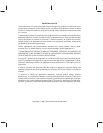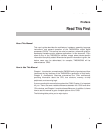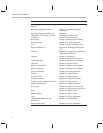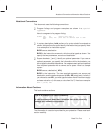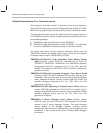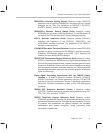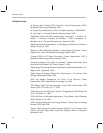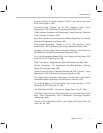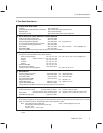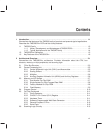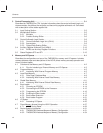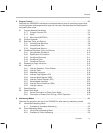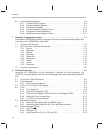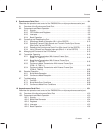
Notational Conventions/Information About Cautions
v
Read This First
Notational Conventions
This document uses the following conventions:
Program listings and program examples are shown in a special
typeface.
Here is a segment of a program listing:
OUTPUT LDP #6 ;select data page 6
BLDD #300, 20h ;move data at address 300h to 320h
RET
In syntax descriptions, bold portions of a syntax should be entered as
shown;
italic
portions of a syntax identify information that you specify. Here
is an example of an instruction syntax:
BLDD
source, destination
BLDD is the instruction mnemonic, which must be typed as shown. You
specify the two parameters,
source
and
destination
.
Square brackets ( [ and ] ) identify an optional parameter. If you use an
optional parameter, you specify the information within the brackets; you
do not type the brackets themselves. You separate each optional operand
from required operands with a comma and a space. Here is a sample
syntax:
BLDD
source
,
destination
[, AR
n
]
BLDD is the instruction. The two required operands are
source
and
destination
, and the optional operand is AR
n
. AR is bold and
n
is italic; if
you choose to use AR
n
, you must type the letters A and R and then supply
a chosen value for
n
(in this case, a value from 0 to 7). Here is an example:
BLDD *, #310h, AR3
Information About Cautions
This book contains cautions.
This is an example of a caution statement.
A caution statement describes a situation that could potentially
damage your software or equipment.
The information in a caution is provided for your protection. Please read each
caution carefully.




